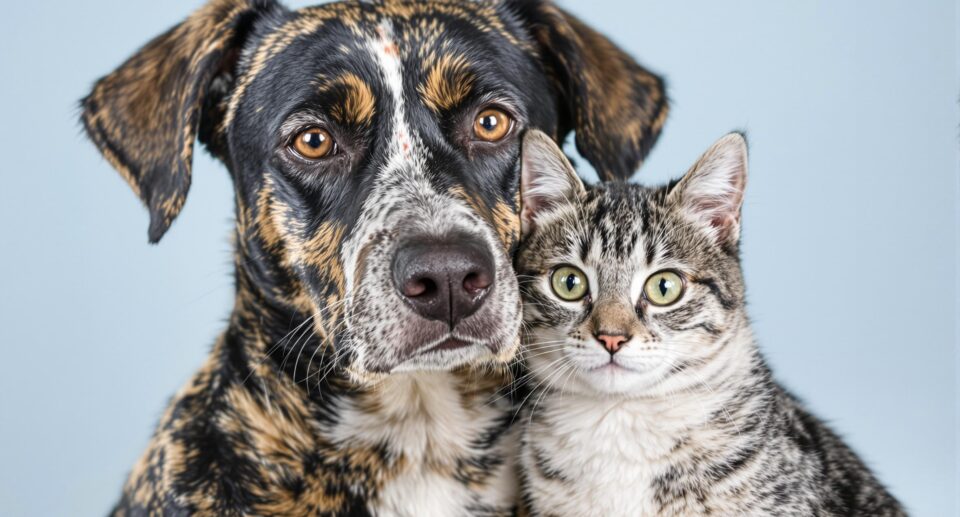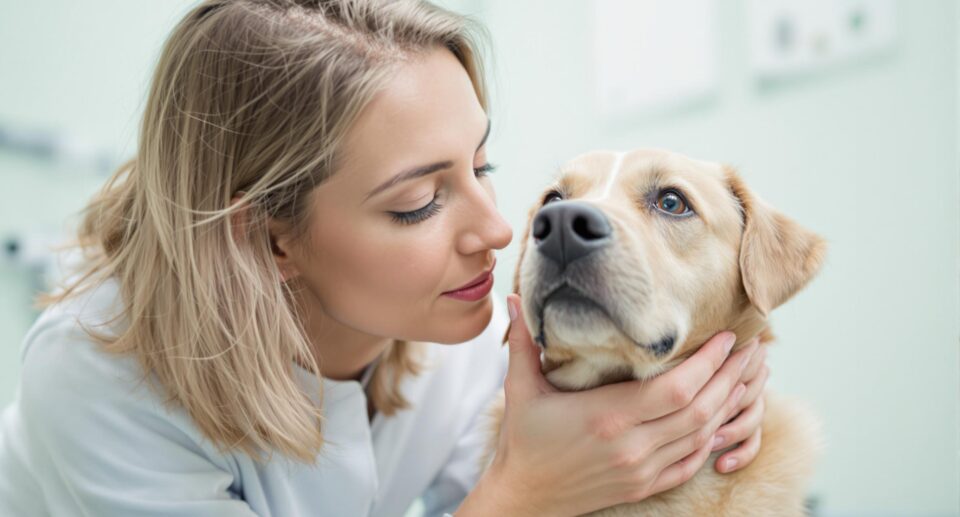Hair Loss (Alopecia) in Dogs

Hair loss in dogs and cats can appear as areas without hair (bald patches or alopecia) or areas with thinning hair. There may also be changes in the skin with increased pigmentation, redness, swelling, crusting, flaking, or moist oozing and discharge. There may be an unpleasant odor. If hair loss is caused by malfunction of adrenals, liver, kidneys, ovaries, testicles, or thyroid, pets may also have these signs:
- Behavior changes and irritability
- Lethargy
- Restlessness
- Weight gain or weight loss
- Increased water consumption
- Increased urination (polyuria/polydipsia or PU/PD)
Patterns of hair loss in dogs and hair loss in cats
Among the hair loss in dogs and cats, patterns may include:
- Thin all over
- Thin over the back and sides
- Thin over the ears
- Thin along the neck
- Thin under the belly
- Complete loss along sides and down tail leaving the tip with hair (like a lion’s tassel)
- Circular patches of baldness
- Bald abdomen
- Bald patches on fore legs above the wrist (carpus)
- Bald patches on back legs on the side above the ankle (tarsus)
- Balding along the back of the hind limbs up over the scrotum
Generally, the pattern of balding or thinning suggests the cause of hair loss. For example, pets with chewed off hair and bald, patchy areas over the base of the tail, inside the back legs, and on the abdomen often have fleas. Pets with thin skin and hair loss along the back and sides, and down the tail, but not the tip of the tail often have high cortisol levels and Cushing’s disease. Pets with thick skin, weight gain and dull, thinning hair over the back and sides often have low thyroid levels and hypothyroid disease.
Hair loss due to chewing and shedding
To evaluate whether hair was chewed off or fell out, hair is put under the microscope. Hair that falls out has a root with a little bulb. Hair that is chewed out does not end in a smooth bulb. Hair that falls out suggests illness, hormonal, or endocrine problems, but hair that is chewed suggests fleas, other external parasites, or behavioral problems.
Signs of an underlying disease or illness
Often pets that are ill hide symptoms and we first realize they might be ill because the hair falls out. For example, pets with Cushing’s disease begin drinking more and urinating more, but we might not notice until we realize their hair is falling out on their sides. Pets with hypothyroid disease become lethargic and put on weight, but we might not realize this is a medical problem until their hair thins or fails to grow back in after they are clipped.
How does dog and cat hair grow?
Hair begins growth within a little pocket called a follicle where it is nourished by proteins and other materials in the blood. Blood also carries hormones, such as epidermal growth factor, that determine the growing, resting, regressing, and shedding phases.
Hormones that control hair growth are influenced by sunlight and temperature, so that many pets have major growing and shedding cycles each spring and fall. With more pets kept indoors in a controlled climate, marked growing and shedding cycles are less frequent, and many pets appear to shed more evenly throughout the year.
There are some dogs that do not shed very much at all. These dogs have hair that grows constantly and can become very long. Poodles and Shih Tzus are good examples of dogs with constantly growing hair. Although these pets don’t shed, their coats require care, usually clipping every 4-6 weeks.
Hair growth can be compared to leaf growth.
Hair grows in cycles or phases, which is easy to understand when hair is compared to leaves on trees. Trees have new leaf growth in the spring, then during the summer leaves stay active but are no longer increasing in number. In the fall, leaves die. In late fall, they fall from the tree. For hair, the phases are similar:
- Growth phase (anagen)
- Resting phase (telogen)
- Regressing phase (catagen)
- Shedding phase (exogen)
Hairs over the body don’t move through the phases at the same rate. For example, hair over the back and hips grows more slowly than hair on the chest. The rate at which hair grows is influenced by hormones and by blood supply. A good blood supply brings nutrients and a normal concentration of hormones so that the area experiences healthy hair growth. Areas with a poor blood supply do not have healthy hair growth.
Unlike humans who have one of a few hairs growing in each follicle, most dogs and cats have many hairs in each follicle. With so much hair in a follicle, when follicles go through the shedding phase there is lots of hair to clean up.





